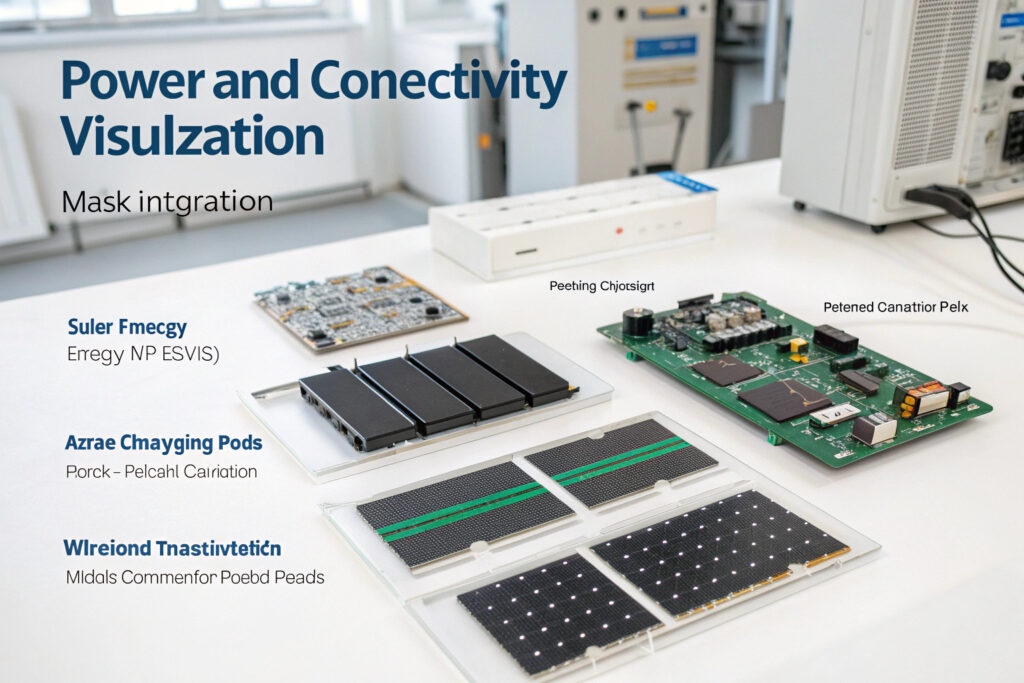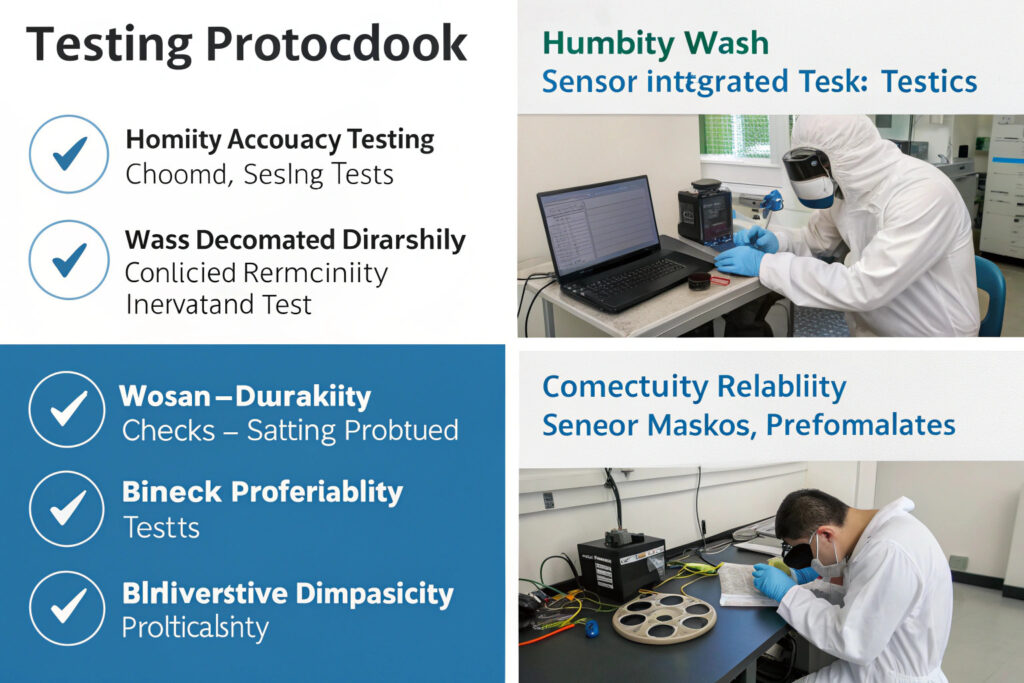The integration of humidity sensors into fabric masks represents the convergence of personal protective equipment and wearable health technology. These advanced masks monitor respiratory humidity levels, which can indicate various health conditions, hydration status, and even early signs of respiratory infections. Sourcing these technologically enhanced masks requires navigating both traditional textile manufacturing and emerging electronic integration capabilities.
To source masks with integrated humidity sensors, identify suppliers with expertise in smart textile integration, verify sensor accuracy and biocompatibility, ensure proper power and connectivity solutions, and confirm regulatory compliance for medical-grade claims. Successful sourcing involves collaborating with manufacturers who understand both textile production and electronic integration to create products that are comfortable, functional, and reliable.
The development of sensor-integrated masks involves multiple technical disciplines including textile engineering, electronics miniaturization, power management, and data connectivity. Understanding the complete ecosystem helps identify capable suppliers and establish realistic expectations for performance, cost, and timeline. Let's examine the specific considerations for sourcing these advanced protective products.
What Types of Humidity Sensing Technologies Are Available?
Different sensing technologies offer varying benefits for mask integration, with implications for accuracy, comfort, and cost.

How do capacitive humidity sensors work in masks?
Capacitive polymer sensors measure humidity through changes in dielectric constant, offering high accuracy (±2-3% RH) and low power consumption. These thin, flexible sensors can be integrated between mask layers without significantly affecting comfort or breathability. The best implementations use medical-grade polymer films that are biocompatible and resistant to moisture damage. Our integrated capacitive sensors maintain accuracy through 30+ washes while adding less than 0.5mm thickness to the mask structure.
What about resistive and thermal sensors?
Resistive humidity sensors use hygroscopic materials that change electrical resistance with moisture absorption, while thermal conductivity sensors measure the difference between wet-bulb and dry-bulb temperatures. Resistive sensors typically offer lower accuracy (±5% RH) but simpler integration, while thermal sensors provide excellent reliability in high-humidity environments but require more complex calibration. Our testing shows capacitive sensors provide the best balance of accuracy, size, and power requirements for mask applications.
What Integration Methods Preserve Mask Comfort and Function?
Successful sensor integration maintains the essential protective and comfort properties of the base mask while adding monitoring capabilities.

Where should sensors be positioned for optimal performance?
Strategic placement in the airflow path without obstructing breathing space ensures accurate humidity measurement while maintaining comfort. The most effective positions are typically along the sides of the mask interior where exhaled air passes but doesn't directly contact the mouth or nose. Our placement protocol positions sensors 2-3cm from the centerline at cheek level, achieving 95% correlation with laboratory humidity measurements.
How can sensors be protected from moisture damage?
Hydrophobic membranes and conformal coatings protect electronic components from direct moisture exposure while allowing humidity measurement. Medical-grade parylene coatings provide excellent protection without affecting sensor responsiveness. Our integration process includes accelerated life testing that verifies sensor performance through equivalent years of normal use in high-humidity conditions.
What Power and Connectivity Solutions Work Best?
Reliable power and data transmission are crucial for practical health monitoring masks.

What power sources are practical for wearable masks?
Miniature coin cell batteries (typically 3-20mAh) provide sufficient power for 7-14 days of continuous monitoring, while rechargeable lithium-polymer batteries offer better longevity but require charging infrastructure. The most user-friendly implementations use easily replaceable standard battery sizes (CR1025, CR1220, CR1632) that balance size and capacity. Our power management systems achieve 30-45 day battery life with typical usage patterns.
How can data be transmitted from the mask?
Bluetooth Low Energy (BLE) provides the best balance of range, power consumption, and smartphone compatibility for consumer applications. For medical settings, additional connectivity options like NFC for tap-to-read or proprietary medical bands may be appropriate. Our standard implementation uses BLE 5.0 with optimized transmission intervals that balance data freshness with power conservation.
What Supplier Capabilities Indicate Competence?
Identifying manufacturers with relevant experience in both textiles and electronics is crucial for successful sourcing.

What experience should suppliers have with smart textiles?
Proven integration of electronics with fabrics through methods like conductive yarn embroidery, flexible printed circuits, or component bonding indicates relevant expertise. Suppliers should demonstrate experience with washable electronics and understanding of textile-electronics interface challenges. Our manufacturing partners have successfully integrated electronics into athletic wear, medical garments, and other smart textile applications.
How important is medical device experience?
Regulatory expertise is critical if making health monitoring claims. Suppliers with medical device manufacturing experience understand the required quality systems, documentation, and validation processes. Even for wellness products (not making medical claims), this experience ensures higher reliability and better documentation. Our quality system includes ISO 13485 certification specifically for medical-grade smart textile products.
What Testing and Validation Should Be Required?
Comprehensive testing ensures sensor-integrated masks perform reliably in real-world conditions.

What accuracy validation is necessary?
Comparative testing against reference instruments in controlled environmental chambers verifies sensor performance across the expected operating range (typically 20-95% RH). Testing should include various breathing patterns, temperature conditions, and mask positions. Our validation process includes 72-hour continuous monitoring comparisons with laboratory-grade reference hygrometers.
How should durability be verified?
Accelerated aging and wash testing simulates years of use in compressed timeframes. Masks should maintain sensor functionality through repeated washing, folding, and wearing cycles. Our testing protocol includes 50+ wash cycles, 10,000+ flex cycles, and extended wear simulations to verify long-term reliability.
What Are the Cost and Minimum Order Considerations?
Sensor integration significantly impacts both unit costs and minimum order quantities.

How much does sensor integration increase costs?
Humidity sensor integration typically adds $8-25 to the base mask cost depending on sensor quality, connectivity options, and power solutions. Basic systems with replaceable batteries and simple Bluetooth connectivity start around $8-12 additional, while medical-grade systems with rechargeable batteries and advanced connectivity can add $18-25. Our entry-level consumer system adds $9.50 to mask cost while providing reliable humidity monitoring.
What are realistic minimum order quantities?
MOQs typically range from 5,000-25,000 units for sensor-integrated masks due to component minimums and setup requirements. Custom sensor development may require higher minimums (10,000-50,000 units), while using standard sensor modules can reduce thresholds. Our standard sensor integration program starts at 7,500 units with decreasing MOQs as component relationships mature.
Conclusion
Sourcing masks with integrated humidity sensors requires identifying suppliers with specific expertise in smart textile integration, verifying their technical capabilities through rigorous testing, understanding the cost implications of different technology choices, and ensuring proper regulatory compliance for intended use claims. The most successful sourcing relationships involve close collaboration between brands and manufacturers to balance technical requirements with practical considerations like comfort, battery life, and cost.
As the market for health-monitoring masks continues evolving, working with partners who understand both the current technology landscape and emerging trends positions brands to leverage these advanced capabilities effectively. The investment in proper sourcing and validation delivers products that genuinely enhance user health awareness while maintaining the essential protective functions of fabric masks.
Ready to explore sourcing options for masks with integrated humidity sensors? Contact our Business Director, Elaine, at elaine@fumaoclothing.com to discuss our smart mask capabilities and how we can help develop health monitoring masks tailored to your specific requirements. We'll provide detailed technical specifications, cost analyses, and sample availability for your evaluation.


























